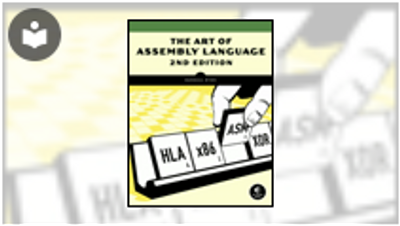The Art of Assembly Language, 2nd Edition
- 13h 50m
- Randall Hyde
- No Starch Press
- 2010
Assembly is a low-level programming language that's one step above a computer's native machine language. Although assembly language is commonly used for writing device drivers, emulators, and video games, many programmers find its somewhat unfriendly syntax intimidating to learn and use.
Since 1996, Randall Hyde's The Art of Assembly Language has provided a comprehensive, plain-English, and patient introduction to assembly for non-assembly programmers. Hyde's primary teaching tool, High Level Assembler (or HLA), incorporates many of the features found in high-level languages (like C, C++, and Java) to help you quickly grasp basic assembly concepts. HLA lets you write true low-level code while enjoying the benefits of high-level language programming.
As you read The Art of Assembly Language, you'll learn the low-level theory fundamental to computer science and turn that understanding into real, functional code. You'll learn how to:
- Edit, compile, and run an HLA program
- Declare and use constants, scalar variables, pointers, arrays, structures, unions, and namespaces
- Translate arithmetic expressions (integer and floating point)
- Convert high-level control structures
This much anticipated second edition of The Art of Assembly Language has been updated to reflect recent changes to HLA and to support Linux, Mac OS X, and FreeBSD. Whether you're new to programming or you have experience with high-level languages, The Art of Assembly Language, 2nd Edition is your essential guide to learning this complex, low-level language.
About the Author
Randall Hyde is the author of Write Great Code Volumes 1 and 2 (No Starch Press) and the co-author of MASM 6.0 Bible (The Waite Group). He has written for Dr. Dobb's Journal, Byte, and various professional journals. Hyde taught assembly language at the University of California, Riverside for over a decade.
In this Book
-
Hello, World of Assembly Language
-
Data Representation
-
Memory Access and Organization
-
Constants, Variables, and Data Types
-
Procedures and Units
-
Arithmetic
-
Low-Level Control Structures
-
Advanced Arithmetic
-
Macros and the HLA Compile-Time Language
-
Bit Manipulation
-
The String Instructions
-
Classes and Objects



